New 1.8 Turbo Steals VW’s Base
By John Gilbert
ST. HELENA, CALIF. — The best thing Volkswagen is bringing to its lineup for the 2014 model year is more than skin deep — a new base engine for its whole car line. The best thing Volkswagen may bring to the U.S. for 2015 is the sportiest car in its whole lineup, a secret weapon that’s been sold only in Europe — the Scirocco.
Those were the main disclosures Volkswagen officials made to members of the automotive media, gathered at the Meadow Wood Resort near St. Helena, a small town in the heart of the Napa Valley wine-growing region north of San Francisco.
The engine is the hottest news. Volkswagen for years has stayed with a series of high-tech engines for its full line of vehicles, with a 2.5-liter 5-cylinder as its base engine, and upgrades that include a 2.0 TSi (turbocharged) 4-cylinder, and a 2.0 TDI (turbo diesel), with spot duty for a venerable V6 engine known as the VR-6.
Curiously, while the 2.5 is the largest-displacement engine in the basic Beetle, Golf, Jetta, and Passat, it also is the dullest engine in the fleet, because the 2.0 turbo has a lot more pizzaz and potential fuel economy, while the 2.0 TDi has remarkable torque and can get up to and beyond 50 miles per gallon of diesel fuel.
For 2014, Volkswagen is introducing a new 1.8-liter TSi 4-cylinder, which is remarkably engineered to coordinate less power into a lighter package but, with direct injection and turbocharging, make the little engine feel like a much larger displacement unit. A smaller derivative of the 2.0 TSi, the 1.8 Turbo feels quick and potent all the way up the RPM scale, and it also delivers better fuel economy on regular fuel, unlike the 2.0-turbo gas engine.
“The 1.8-TSi is built out of all-new architecture,” said Mark Trahan, the executive vice president of group quality for all Volkswagen and Audi vehicles. “It has all the latest technology, including direct injection, low-friction parts, and the exhaust manifold is designed right into the cylinder head. It has 170 horsepower and 184 foot-pounds of torque, and while that torque is 30 foot-pounds less than the 2.0 Turbo, the torque peaks at 1,500 RPMs.”
It is torque, and not horsepower, that gives a car brisk acceleration, and the new 1.8 Turbo proves that it doesn’t matter if it doesn’t have a lot of torque, as long as that torque all comes in when it’s most needed. In a car like the Jetta, the 1.8 hits peak torque at 1,500 RPMs, which is barely above idle speed, and it stays on a torque curve that is almost entirely flat all the way to the horsepower peak.
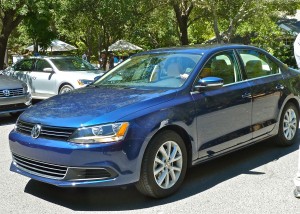
Compact Jetta will be among first to use the new 1.8 TSi engine with 170 horsepower and 184 foot-pounds of torque.
After driving several other VW models from Meadow Woods around the area roadways, I signed out a new Jetta with the new 1.8. When I hit second gear with the 6-speed stick, the car had so much mid-range punch that my first thought was that I’d mistakenly taken a turbo-diesel model. The turbo-diesel has so much torque at start-up that it rivals the hotter GTI/GLI sports models, and that’s the way the Jetta felt. But instead of the tubro-diesel, the Jetta had the new and plenty zippy 1.8-liter turbocharged gasoline 4-cylinder . VW has gone to fewer cylinders and smaller displacement to find a far superior engine.
To begin with, the 1.8-TSi replaces the 2.5 as the base engine in the compact Jetta and midsize Passat. Eventually, it also will be the base engine in the Golf, the Beetle, and the Jetta SportWagon, which will all start the new model run with the 2.5 before it gets phased out.
Part of the reasoning is that the Golf is going into its final year before being replaced by an all-new seventh-generation model. For now, the CC, Golf GTI, Jetta GLI, and Beetle Turbo will keep using the 2.0-Turbo.
Doug Skorupski, VW’s technical strategy manager, said higher gas prices have made U.S. consumers smarter, like their European counterparts. “People in the U.S. were more content than European car owners who have been paying $7 a gallon or more for years,” Skorupski said. “More than just good EPA numbers, we’re interested in real-world fuel economy.
“We are aiming at becoming the largest automaker in the world, and last year, we came in a close third behind Toyota and General Motors. Our new 1.8 Turbo is going to be our volume engine in the Passat, Jetta and Beetle, and while it will show improved fuel economy, it drives like a higher-displacement engine. We use turbocharging for efficiency, not just power, and because the 1.8 uses 87 octane regular fuel, we say it’s a premium engine but burns regular gas.”
During the full day of choosing cars to test-drive, I drove more than a dozen vehicles, but the first one I signed up for was a sleek, blue Scirocco. When it first came out, the Scirocco was a low-slung sporty coupe, and it has evolved to the point where it is a flashy model of the Golf. When I last saw Sciroccos, it was in Germany, and every time I saw one I stopped and shot photos of it. The car doesn’t look that much different from the standard Golf R or GTI, but it looks like one of those that a top-level California customizing shop completely redid.
For years, I’ve asked VW officials about bringing the Scirocco to the U.S., but they’ve always said they didn’t want to intrude on the Golf or GTI markets. This time, I said, “If Honda made one model that was clearly the best looking and sportiest car in their whole line, and they said they wouldn’t bring it into the U.S., we’d all say that was pretty stupid, wouldn’t we?”
A couple of different VW engineers agreed it would be. Then I said, “Well…?”
Finally, Andres Valbuena, whose job it is to negotiate which cars from Wolfsburg will be sold in the U.S., acknowledged that when the Scirocco undergoes its next scheduled renovation, for 2015, it very likely will come into the U.S.
The Scirocco drives with the potency of the GTI, but has the high-style bodywork that befits a specialty model.
The basic Golf, VW’s highest-selling car worldwide, is already coming out in Europe, and will supplant the existing model in the U.S. by the middle of the 2014 calendar year.
The Jetta will have the most versatile powertrains, with the new 1.8 Turbo, the 2.0 Turbo, the 2.0 turbo-diesel, and the 1.4-liter gas-powered turbo combined with an electric motor for a hybrid. Like the Golf, the Jetta will have independent rear suspension.
Passats can be purchased with the VR-6 engine, as can the Touareg SUV. The Passat, the only car currently built in the new and high-tech plant in Chattanooga, Tennessee, will probably have some company as VW’s aggressive plans to increase sales in North America mean building more Golf and Jetta models in Chattanooga and at the Puebla, Mexico, plants.
As it is, the Passat is VW’s vanguard breaking the trail for expanding turbo-diesel sales. Several months ago, a carefully calibrated test run was made to drive through all 48 contiguous states in a Passat TDI, and while the drivers was unquestionably conservative, he averaged an astounding 77.9 miles per gallon. It follows that in July, 39 percent of Passat sales were with the 2.0 TDI. So were over 20 percent of Jetta sales. Interestingly, 85 percent of Jetta SportWagon sales, and 50 percent of both Golf and Touareg sales also specify turbo-diesels.
The sleek “4-door-coupe” styled CC was given its first redesign for 2013, while the Beetle also was revised for 2013. A new GSR model of the Beetle Turbo joins the fleet for 2014.
Amid all the new products, the compact crossover Tiguan continues after its recent revision, while Jetta, Golf, and Touareg all are entering their final year before renovation. Under the hoods, where VW makes its biggest news, the new 1.8-liter Turbo base engine will be joined soon by a similarly new turbo-diesel in another year.
It’s easy to see the company’s determination in becoming the world’s largest automaker, and the 2014 array of VW models makes it definitely feasible to happen in 2013 or 2014.
Comments
Tell me what you're thinking...
and oh, if you want a pic to show with your comment, go get a gravatar!


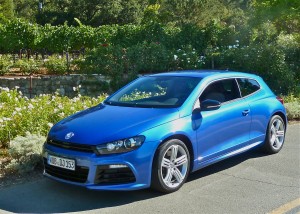
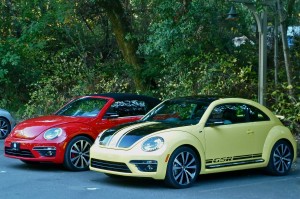
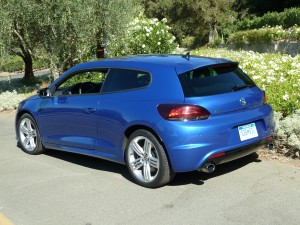
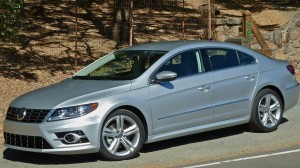
 John Gilbert is a lifetime Minnesotan and career journalist, specializing in cars and sports during and since spending 30 years at the Minneapolis Tribune, now the Star Tribune. More recently, he has continued translating the high-tech world of autos and sharing his passionate insights as a freelance writer/photographer/broadcaster. A member of the prestigious North American Car and Truck of the Year jury since 1993. John can be heard Monday-Friday from 9-11am on 610 KDAL(www.kdal610.com) on the "John Gilbert Show," and writes a column in the Duluth Reader.
John Gilbert is a lifetime Minnesotan and career journalist, specializing in cars and sports during and since spending 30 years at the Minneapolis Tribune, now the Star Tribune. More recently, he has continued translating the high-tech world of autos and sharing his passionate insights as a freelance writer/photographer/broadcaster. A member of the prestigious North American Car and Truck of the Year jury since 1993. John can be heard Monday-Friday from 9-11am on 610 KDAL(www.kdal610.com) on the "John Gilbert Show," and writes a column in the Duluth Reader.